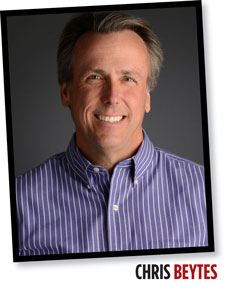7/1/2019
Hemp: Cash Crop/Season Extender/Exit Strategy
Chris Beytes

Are you fed up with the high pressure and low margins of the mass market bedding plant business, but have grown too large to ever serve a “normal” customer base like IGCs and landscapers?
Do you have excess greenhouse space during the off-season and you want to put it to work or lease it out?
Do you want to retire, but you don’t have a next generation waiting to take over your operation and real estate values aren’t such that developers are champing at the bit for the chance to buy your land?
Hemp might be the answer.
Hemp seems to be the crop du jour for all sorts of growers who are seeking higher profits, additional cash flow or even a path to retirement. Yet it’s seemingly come out of nowhere. What is “hemp,” why is it suddenly on the radar and who’s doing what with it?
My expert on the topic, Dr. Brian Corr, author of our “Corr on Cannabis” column, tells me that whether you call it hemp, marijuana, medical marijuana, cannabis or “the devil’s lettuce,” all are the plant Cannabis sativa. The critical difference is in the level of THC—the stuff that gets you high. By law, hemp contains less than 0.3% THC. Anything more than that and it’s not hemp.
Hemp is an ancient crop, important for both food and fiber 10,000 years ago. It used to be widely cultivated in the U.S., even by our founding fathers. During World War II, the U.S. government encouraged farmers to grow hemp to produce rope and canvas for the war effort. But cannabis in all forms, including harmless hemp, was made illegal in the U.S. under 1970’s Controlled Substances Act.
Grown globally, hemp is used in thousands of products, from paper to insulation to bioplastics. But the current hemp trend is primarily about CBD (cannabidiol) oil, believed to have numerous medicinal benefits. Pressed from the hemp seed, the oil can be infused into a ridiculous range of products, from salves and shampoos to gummies, beverages … even pet treats. Thus far, there’s been little research on CBD, however, it’s been approved by the FDA for use in an anti-seizure drug called Epidiolex.
Credit the passage of the 2018 Farm Bill in December for the current explosion in hemp production. That made it “quasi-legal,” Brian says, allowing nationwide production. CBD stores are popping up faster than video rental outlets did in the ’80s and numerous national chains like CVS, Walgreens and Kroger have announced plans to sell CBD products.
That high demand coupled with almost no supply is where our greenhouses come in. Hemp can be grown outdoors by farmers and that business is growing like mad (475 were licensed in Illinois in one month). But farmers need young plants, and according to Brian, hemp liners can sell for $1.50 to $7 each—a lot more than a petunia!
Any wonder then why ColorPoint in Kentucky, a mass market bedding plant grower, has given up the bedding business in favor of hemp liners and finished plants? They were tired of the low margins and the uncertain future of the mass market.
In Colorado, retail florist Brian Wheat of Lafayette Florist & Greenhouse has a five-year lease for 54,000 sq. ft. of their greenhouses with Front Range Bioscience, a Colorado hemp firm. Brian told me via email that the deal has allowed him to remodel his retail area, buy new delivery vans, upgrade his security, increase wages and more.
Brian helped florist Bob Aykens of Memorial Florist & Greenhouses in Appleton, Wisconsin, connect with Front Range and Bob has leased 15,000 sq. ft. of his greenhouse to them. Part of the appeal for Bob is that it will be of help to Wisconsin’s farmers.
“Our state is a huge agriculture industry, and there's a lot of struggles in that industry right now, so I believe this is another way to help that industry continue to grow,” he told local journalists.
As for selling out completely to retire, that’s what ColorPoint did with their Illinois location. Well, they didn’t retire based on that sale, but they perhaps could have, making hemp an exit strategy worth looking at.
The market for CBD-infused products is expected to reach $22 billion by 2022 (from less than $1 billion in 2016). Who knows how big it will get beyond that? Somebody needs to supply all the hemp young plants that will produce all that oil for all those products.
Why not us? GT